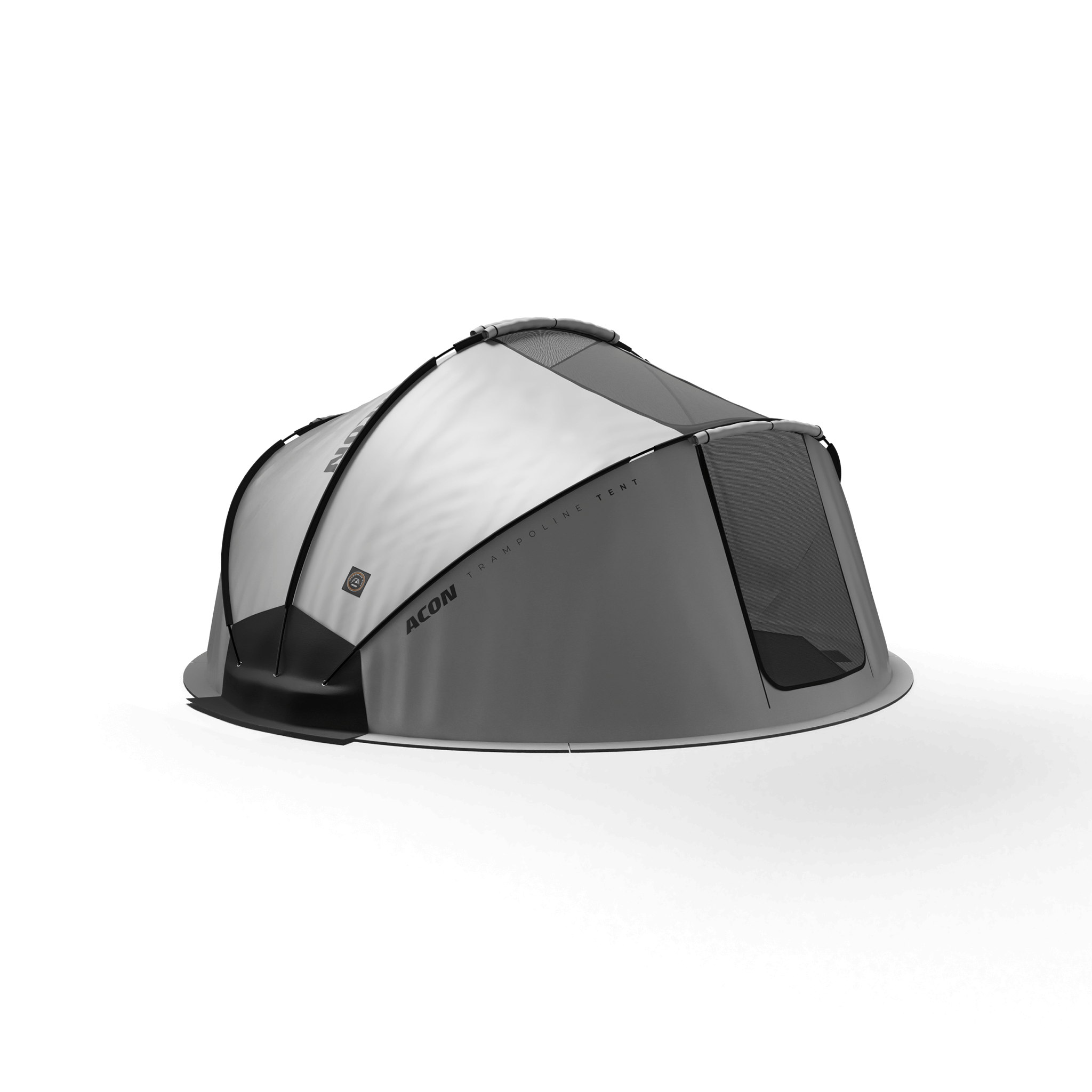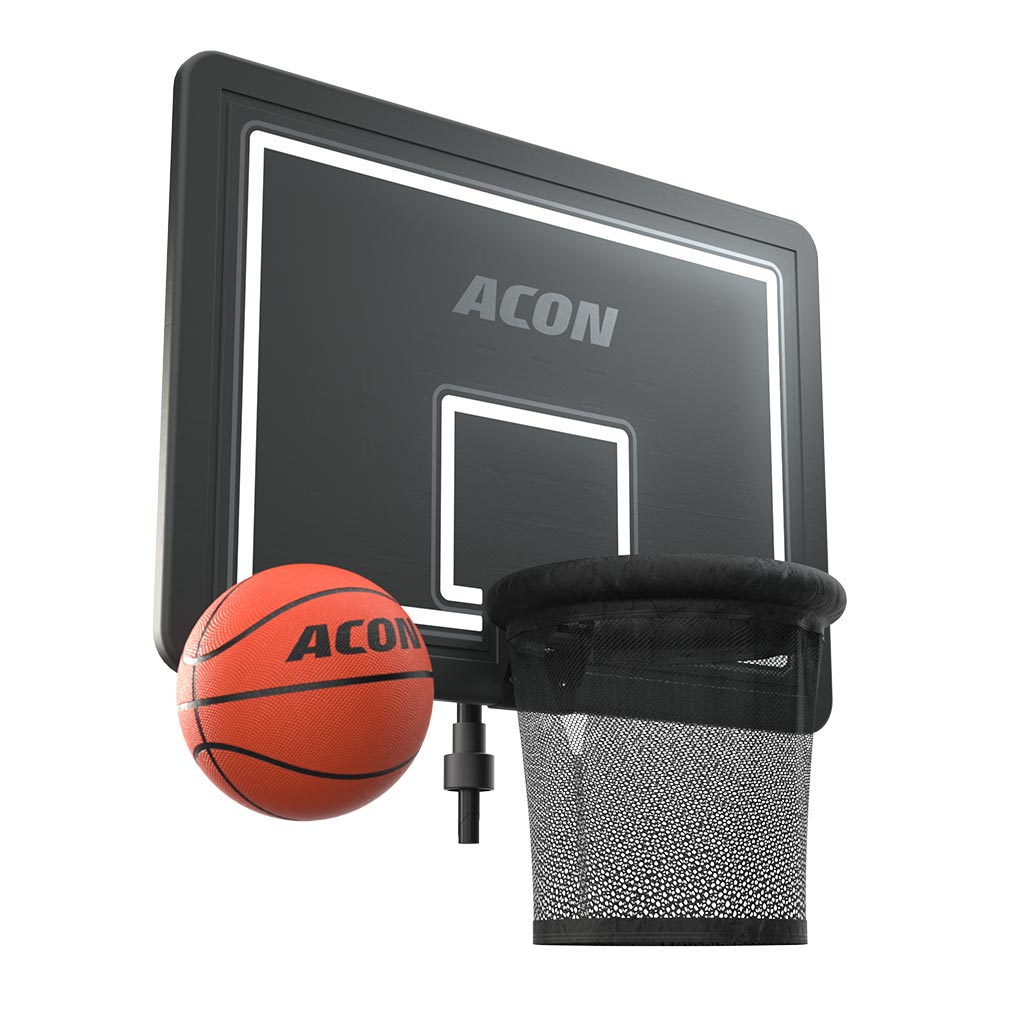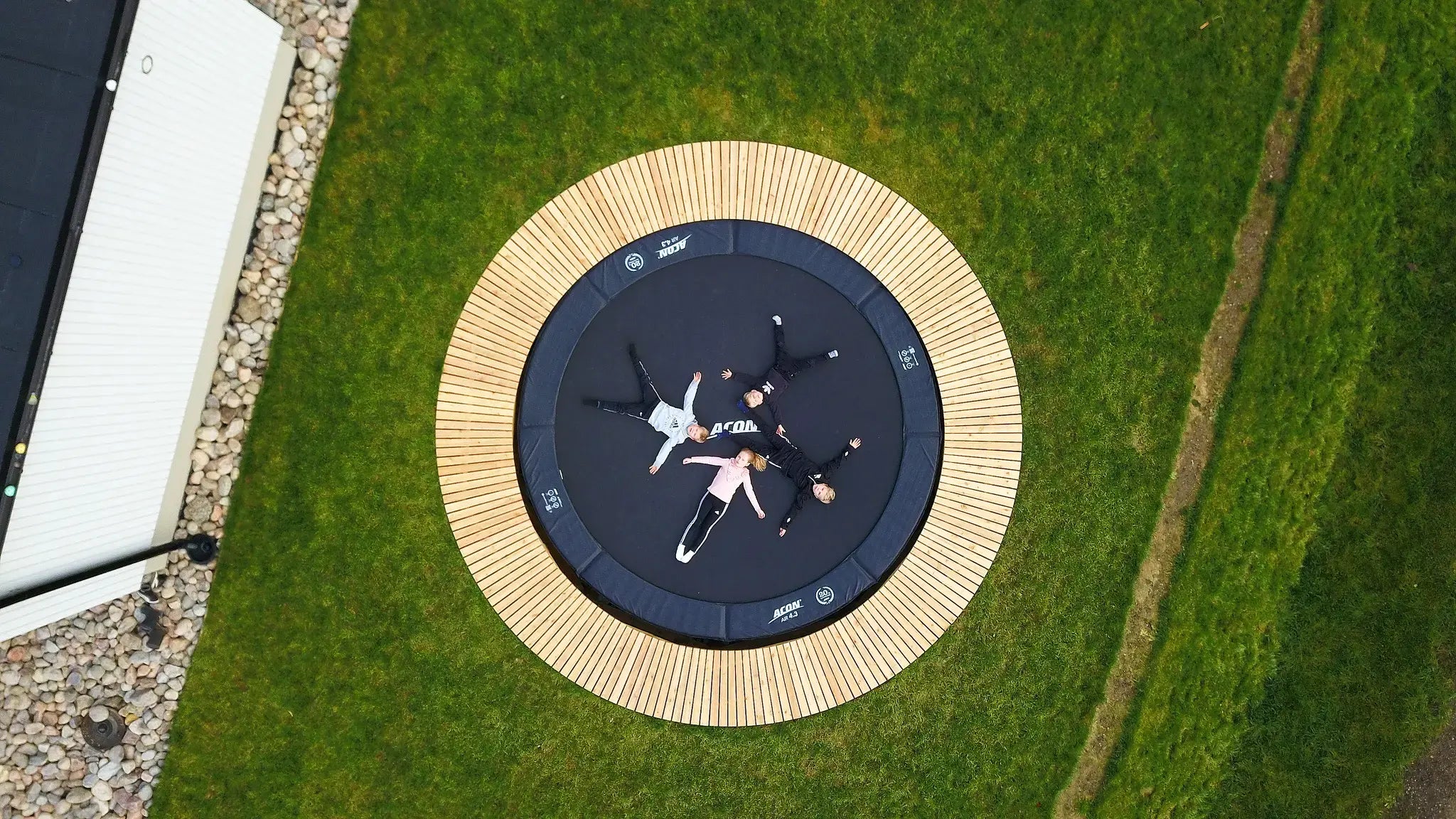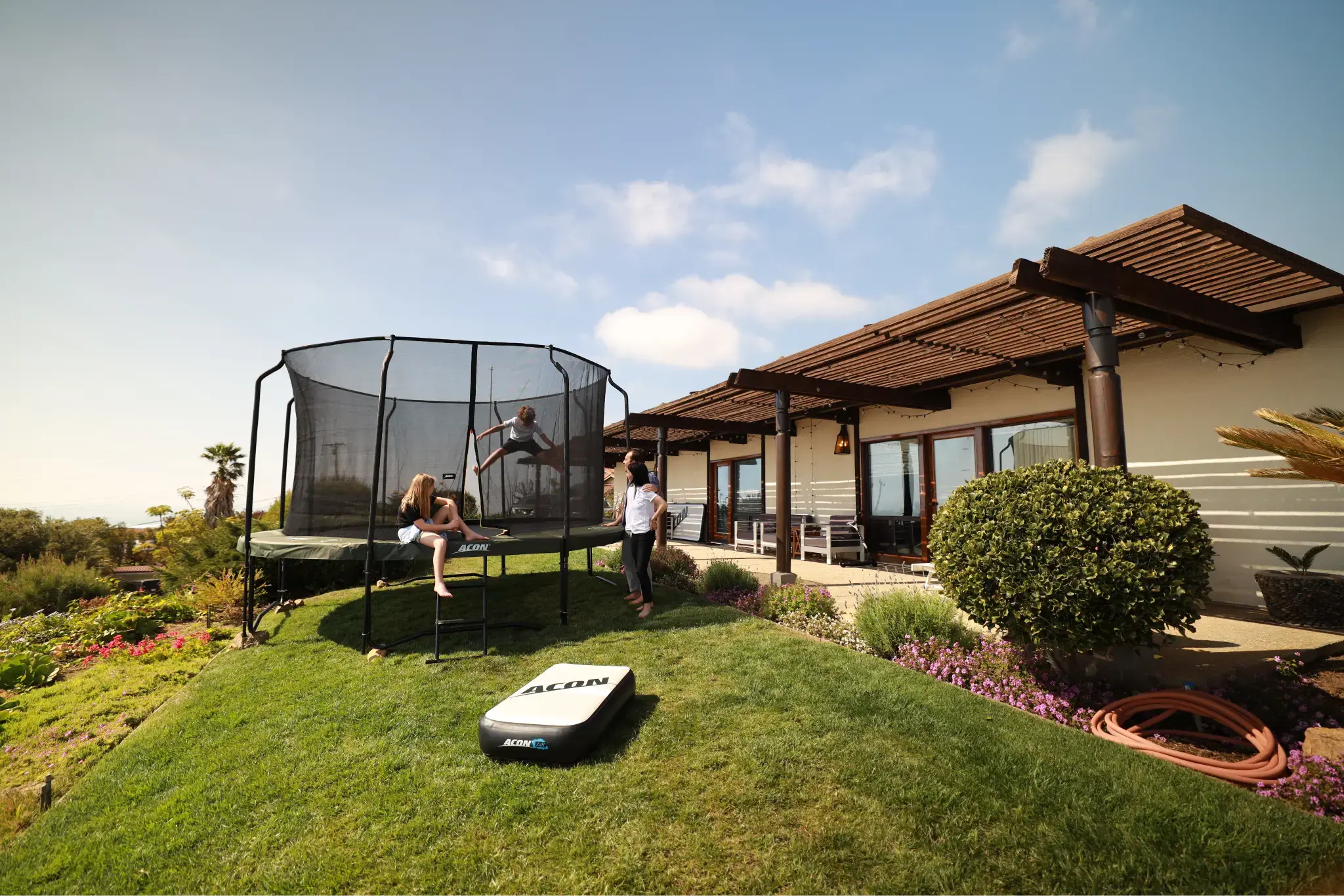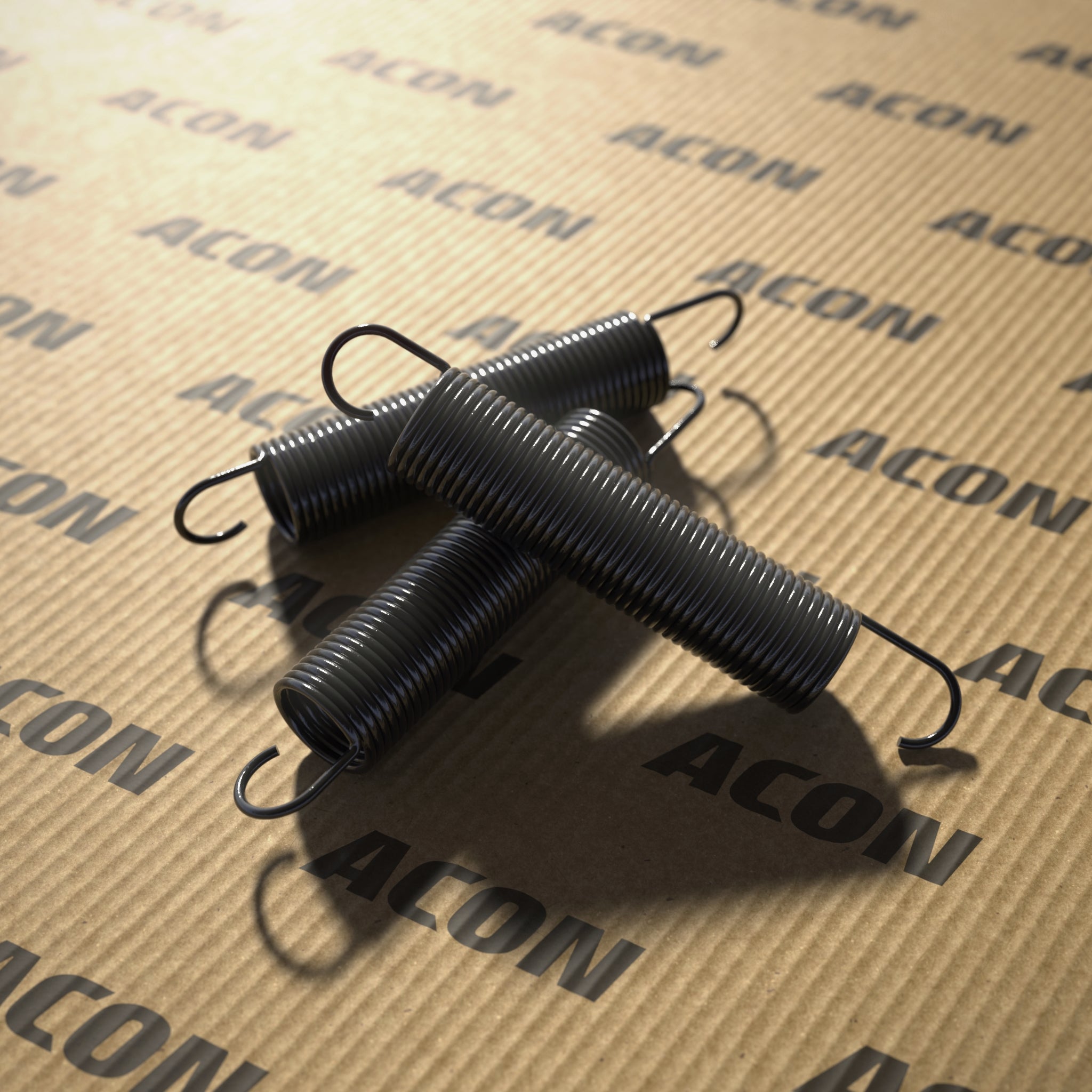Distributacon Inc.
1250 Wayzata Blvd E Unit 1127,
Wayzata, MN 55391, USA
When choosing your trampoline, the installation process is one of the key factors to consider. Above‑ground trampolines can be assembled in a few hours without much hassle, whereas in‑ground trampolines require digging a pit, ensuring proper drainage, and installing a retaining wall. In other words, professional assistance is usually required. This makes in-ground trampolines a more involved and costly project, though for some people the finished look is well worth the effort.
Installing a trampoline in‑ground may reduce its bounce performance because the surrounding pit increases air resistance. You can improve airflow by adding vent tubes or leaving small openings between the frame and pit edge. However, if maximum bounce performance is your priority, we recommend choosing a high airflow mat such as the ACON Performance Mat (for Acon X or 13/16 HD) or the ACON Freestyle Mat, or opting for an above‑ground trampoline instead.
Key Takeaways
- In-ground trampoline blends into the yard aesthetic and can be more stable.
- For maximum bounce performance you may consider above-ground trampolines.
- Above-ground trampolines are easier to move and less costly to install.
Overview of In-ground and Standard Trampolines
There are some key differences in installation between in-ground and above-ground trampolines. Each type has unique features, requirements, and benefits that cater to different needs and preferences.
Key Differences
While many trampolines are designed for either in-ground or above-ground setups, all Acon’s round -and rectangular models are designed to work both above‑ground and in‑ground.
In‑ground trampolines are installed at ground level by digging a hole in the yard. They sit flush with the lawn after excavating a pit to accommodate the trampoline frame. This ground-level design reduces the risk of falls when exiting the mat and blends seamlessly into the landscape.
To help increase airflow, these models need vent pipes or small gaps around the frame, plus reliable drainage to prevent water buildup. Installation involves significant digging and often a retaining wall. This is why the trampoline is not easy to move once installed, in which professional assistance is recommended for safety and long‑term durability
Above‑ground trampolines rest on legs and so are elevated above the yard’s surface. Assembly typically takes just a few hours since no digging is required, and it can be relocated as needed. This ease of installation and portability makes them ideal for renters or anyone avoiding a permanent fixture.
Development
In-ground trampolines have become popular in recent years due to their aesthetic appeal and safety benefits. Initially, they were used in professional sports and training facilities, but now they are common in backyard settings too.
Above-ground trampolines have a longer history, dating back to the 1930s when George Nissen and Larry Griswold developed the first prototype. Over the decades, they evolved into the widely accessible backyard equipment we have today.
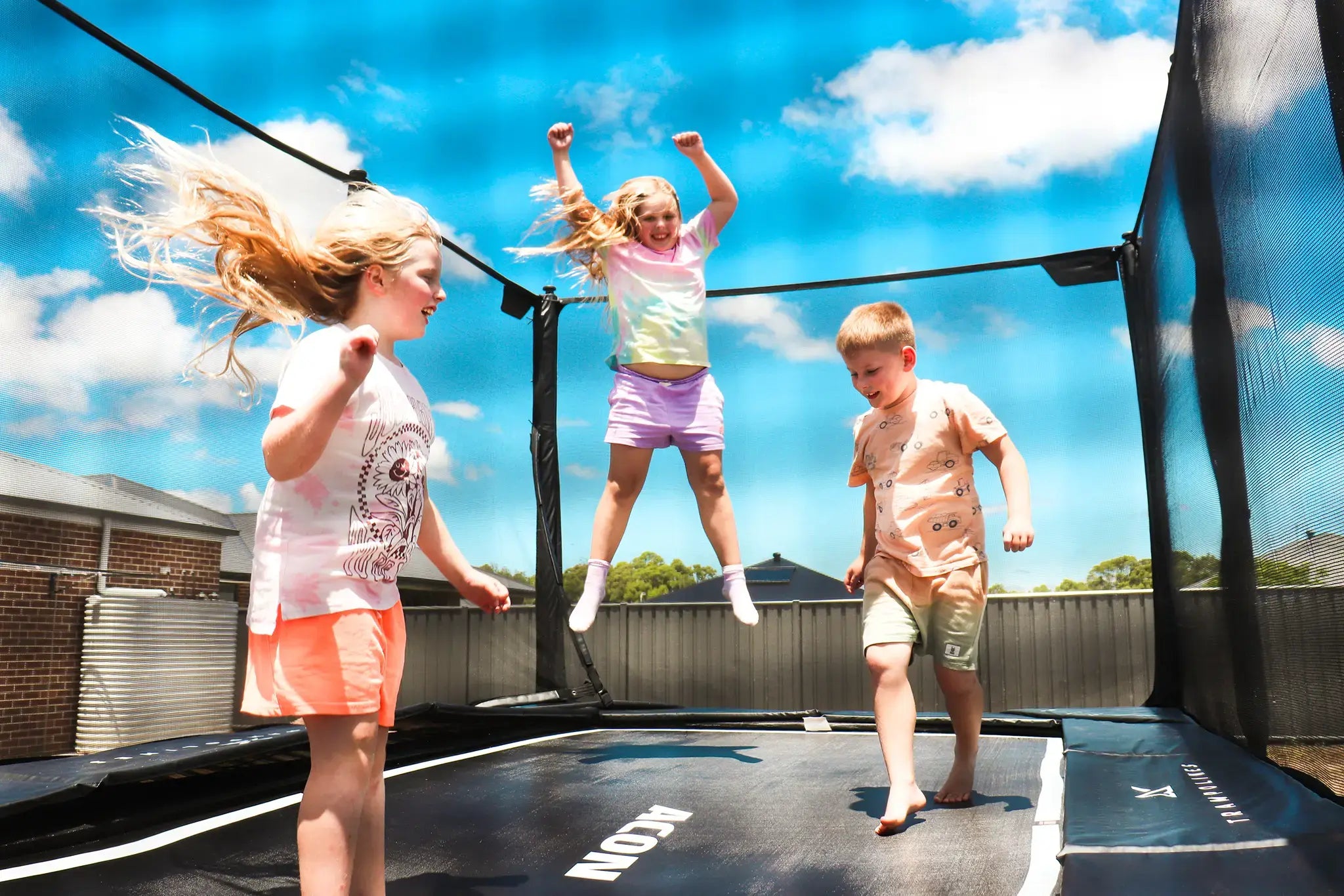
Installation Process
Installing an in-ground trampoline or assembling an above‑ground trampoline starts with choosing the right spot, gathering tools, and following safety guidelines. We recommend including a safety net into both finished setups. Below is a simplified overview of each method. Always make sure to check the specific instructions applicable to your trampoline.
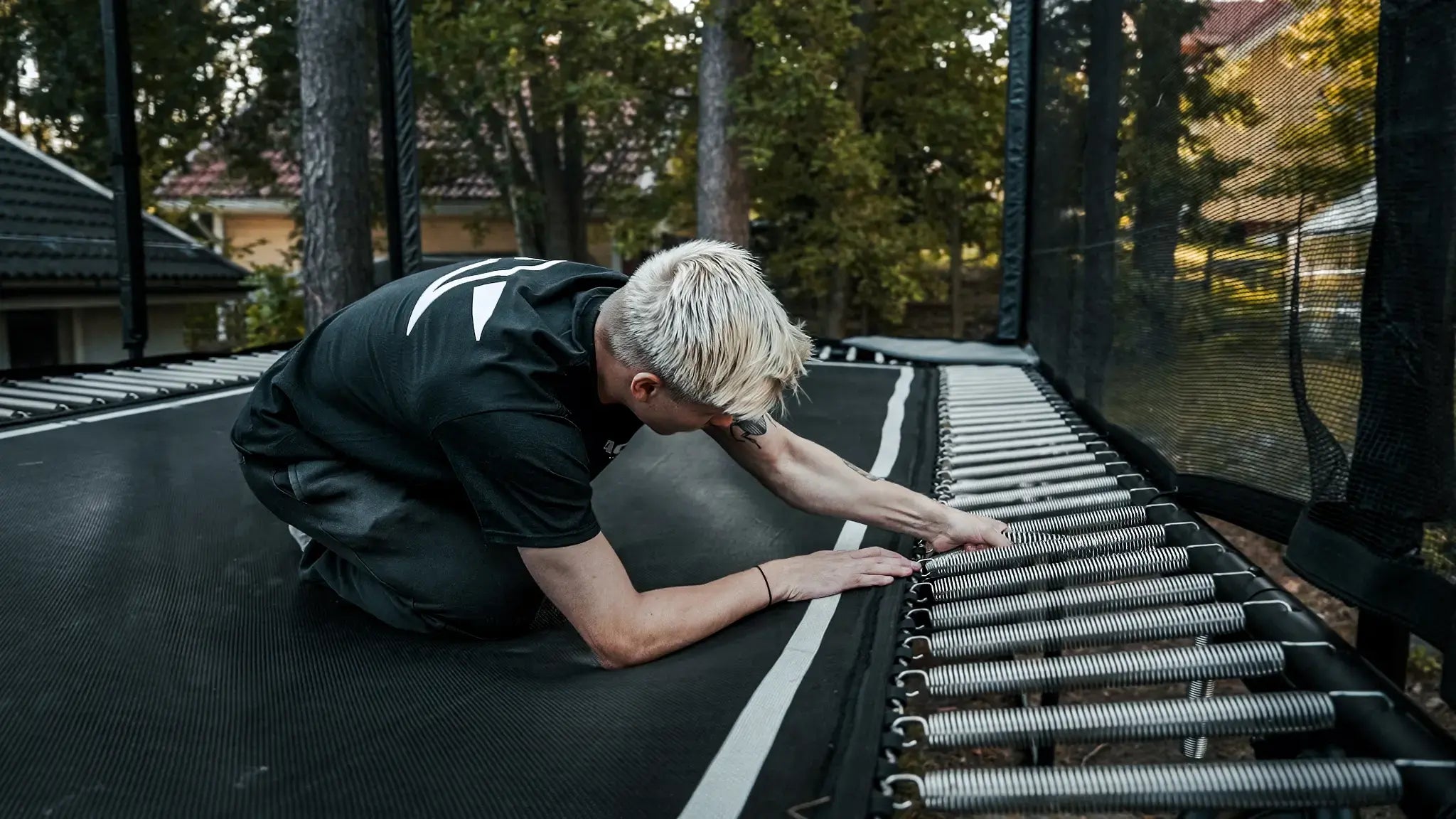
Inground Trampoline Installation
Installing an in‑ground trampoline involves digging, drainage work, and soil support, so hiring a professional is strongly recommended. Start by selecting a level, unobstructed spot and marking out the pit dimensions exactly as specified in your installation guidelines.
Excavate the hole to the model’s required depth, which includes space for the trampoline frame plus a gravel or crushed‑stone drainage layer. This base, combined with a drainpipe or French drain, prevents water from pooling under the mat. Albeit an in-ground trampoline is lower than an above-ground trampoline, we recommend installing a safety net into it as well.
Once the pit is ready, carefully lower the frame into place and check that it sits perfectly level. Attach the springs and jumping mat according to the manufacturer’s instructions, then fit safety pads around the frame to cover any exposed metal.
Ensure proper flow of air by leaving small gaps or installing vent tubes around the frame, and confirm that your drainage system remains clear of debris.
Make sure to refer to the detailed, step-by-step instructions for your trampoline. For Acon models, these can be found on our guidelines page, "Installing Acon Trampolines In Ground."
Above-Ground Trampoline Assembly
Standard above-ground trampoline assembly begins by laying out all frame sections on a flat, level area. Follow the instructions to connect each piece until the frame is fully assembled and stable.
Next, hook the springs around the frame and attach the mat. Work your way evenly around the trampoline, checking that the mat tension is uniform to ensure a safe jumping surface.
Fit any spring pads onto the springs. We recommend installing a safety net to the trampoline if possible. Finally, inspect every connection and make sure the trampoline sits level before use.
Performance and Maintenance
In-ground and above-ground trampolines differ in bounce quality and required maintenance.
Bounce Quality and Performance Factors
Installing a trampoline in‑ground may reduce its bounce performance because the surrounding pit increases air resistance. You can improve bounce modestly by choosing a high airflow mat, or enhancing flow of air with vent tubes or by leaving small openings between the frame and pit edge to aid air circulation. Even with these measures, an in‑ground trampoline offers a softer, more controlled bounce.
Above‑ground trampolines benefit from open space beneath the mat that allows free flow of air, resulting in higher, more energetic jumps without the need for specialized installation. For maximum bounce height and consistency, an above‑ground model with a high airflow mat is the best choice.
Maintenance and Upkeep
In-ground trampolines, due to their partially buried structure, require specific care to ensure longevity and safety:
- Drainage Management: Proper drainage is crucial to avoid water accumulation, which can cause rust and other damage. Ensure the drainage system is functioning correctly and check it regularly.
- Pit Stability: Inspect the retaining walls surrounding the trampoline pit to ensure they are self-supporting and not in contact with the trampoline frame. This helps maintain the integrity of the structure and prevents collapse.
- Soil and Vegetation Control: Prevent vegetation growth in the pit by using weed control fabric and clearing the area of debris regularly.
- Pit Insulation: In cold climates, insulating the pit is recommended to protect the trampoline from frost and freezing. Consult a professional for proper insulation methods.
- General Maintenance: Regularly inspect the trampoline for wear, ensure the safety enclosure is intact, and clean the surface and surrounding area to avoid debris buildup.
Above-ground trampolines, being elevated, have their own set of maintenance needs:
- Surface Area Protection: Inspect the frame, springs, and legs for rust or damage caused by exposure to the elements. Use protective covers or rust treatments to preserve the trampoline if needed. All Acon garden trampoline frames are made with galvanized steel and powder coateed to prevent rusting.
- Anchoring: Acon’s heavy-duty galvanized-steel frames are engineered to stay in place even in strong winds. However, even these sturdier trampolines can benefit from securing with ground anchors, especially in areas with high winds. For flimsier trampoline models, it is still essential to use anchors for maximum stability and to prevent shifting or tipping.
- Safety and Visibility: Ensure there are no objects, pets, or people beneath the trampoline while it is in use. A safety net (enclosure) is essential to prevent falls from height.
- General Maintenance: Like in-ground trampolines, check the trampoline and the safety net for wear and tear, and clean the trampoline surface from leaves and other debris regularly to maintain safety and performance.
Durability and Costs
Investing in a trampoline, whether in-ground or above, involves considerations about durability, weather resistance, value retention, and associated costs. Understanding these aspects can help you when making the best decision for your yard.
Durability and Weather Resistance
In‑ground trampolines sit flush with the lawn, making them highly stable in strong winds and virtually immune to tipping. Since Acon’s trampolines can be installed either in-ground or above-ground, both installations benefit from the same weather‑resistant mats, spring covers, and a powder‑coated frame – while the in-ground trampoline is underground, away from sunlight in this setup. A proper drainage system—gravel layers and drainpipes—is essential to prevent water from pooling around the frame and causing corrosion or structural damage.
Above‑ground trampolines rely on an elevated frame and identical weatherproof components, but their full exposure to rain, snow, and sunlight means routine inspections for corrosion, UV wear, and loose connections are vital. Using a protective cover when not in use and ensuring the frame is anchored and level will help preserve materials and extend the trampoline’s lifespan.
Associated Costs
Since all Acon garden trampolines are suitable for both in-ground and above-ground installation, there is no difference in the cost of the trampoline itself. This might differ with other brands, so be sure to check that the trampoline you are considering for in-ground installation fits the plan. However, there are some additional costs associated with the differences between the two installation types.
In‑ground trampolines do require more time and/or money to install, depending on whether you hire a professional and have the necessary tools. The steps needed include excavation, drainage prep, and any retaining‑wall work.
Ongoing maintenance focuses on inspecting drainage systems and structural supports. When parts wear out, replacing springs or the mat can be more involved, since you must access the frame below grade, move backfill or work through service hatches.
Above‑ground trampolines can be assembled without professional assistance and maintained more easily. Routine inspections for wear and tear are straightforward, and replacing springs, mats, or safety pads at ground level typically takes under an hour, keeping downtime of trampoline use to a minimum.

Frequently Asked Questions
Both in-ground and above-ground trampolines have their own benefits and drawbacks.
What are the key benefits of installing an in-ground trampoline as opposed to an above-ground model?
In-ground trampolines can blend seamlessly into a yard, providing a neater appearance. Above-ground trampolines provide a better bounce, are easier to move and may take less time to set up.
How does the cost of installing an in-ground trampoline compare to that of an above-ground trampoline?
Acon’s trampolines can be installed either above-ground or in-ground, so the purchase price is the same. However, installing an in‑ground trampoline requires excavation, drainage and retaining‑wall work. Professional help is often required which increases the upfront costs, and future part replacements can be more time‑consuming due to below‑grade access. Above‑ground trampolines have minimal site‑preparation costs, and ground‑level maintenance and part swaps keep both repair expenses and downtime lower.
What are the installation requirements for an in-ground trampoline, and how do they differ from setting up an above-ground trampoline?
In-ground trampoline installation requires digging a pit, ensuring proper drainage, and often professional help. Above-ground trampolines need a flat surface, assembling the frame, and adding safety netting and pads. The above-ground setup is generally quicker and less complex.


